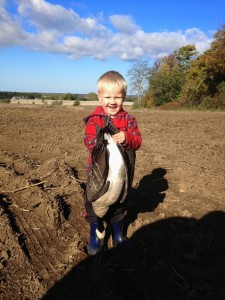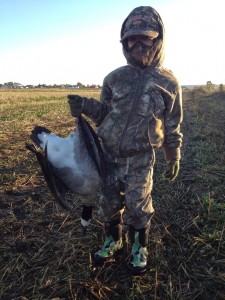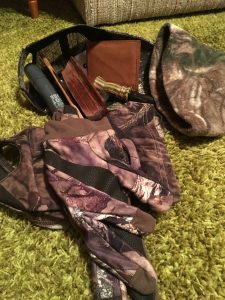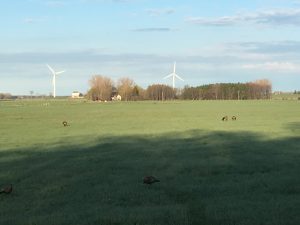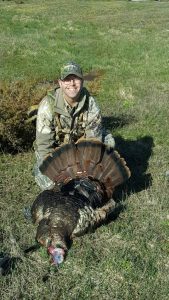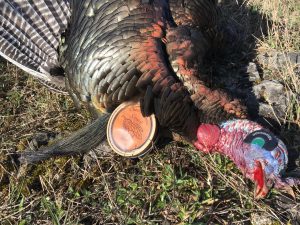In the preceding few years, I have noticed a trend creeping into every aspect of the hunting community, and that is an increased focus on the health benefits of hunting, which is a noble thing to be focusing on. Time spent outdoors is undoubtedly beneficial, a tidy hike through the woods being far preferable to dozens of other sedentary pastimes, and the numerous health benefits of consuming wild game has been proven beyond a shadow of a doubt.
That said, there also seem to be an effort afoot to glorify an ultra-fit outdoors lifestyle as somehow ‘better’ or in some way more rewarding method of pursuing game. Under Armour or Sitka Gear do not have hunting pro-staff members. They have “Athletes”, which in a hunting context sounds patently ridiculous. This whole thing has been on my mind and has been thought-provoking to say the least.
Is this purely self-aggrandizing machismo? Marketing? A way to sub-divide the hunting community into classes? Is there merit in the dichotomy between the HuntFit movement and what I lovingly call the HuntFat movement, and does this dichotomy denigrate anyone who isn’t fit enough to pack out whole elk quarters or climb mountains in search of bighorn sheep? Does this devalue the hunting experience at large of those who are not in peak physical condition? What are the metrics?
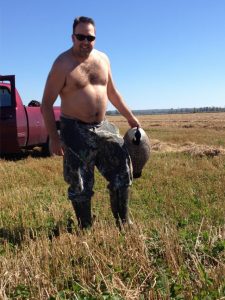
I can remember the first time my own lack of fitness impacted my hunting experience. A one-time collegiate athlete, I had let an inactive lifestyle take over, and between nine hours at a desk every day, a long commute in the car, and a generally poor diet, I had gotten more than soft…I had gotten fat. My cousin Luke and I were hiking out to a couple of deer stands in the Parry Sound district are we hunt in, and I was rapidly getting sweaty, winded, and leg-weary. More than once I stumbled slightly over fallen tree limbs that my legs were just too sore to step over. I was breathing hard and loud, and I was so damp from sweat that I almost immediately caught a chill when I finally reached my stand. Luke, never one to exercise an internal monologue, basically asked if I was going to keel over from a heart attack on the way back out.
Now there are certainly areas of the hunting experience that don’t simply benefit from being ultra-fit, but that essentially mandate it. I would be courting danger to head on a high-country goat hunt in miserable physical shape. I would be doing the animal a disservice if I were pack-hunting and managed to shoot an elk or moose in a spot where the butchery had to happen at the kill site. It takes physical strength and stamina to pack out meat, horns, and hides. I can see why they say that safari hunting on the ground in Africa requires physical and mental stamina, especially when hunting dangerous game. All valid points in favour incorporating high levels of physical fitness into the hunting tradition.
But what about the ‘rest of us’? Last year, my doctor told me it was time for a change, or I was staring down the barrel of obesity, diabetes, and cardiac problems, and I wasn’t even 40 years old. I was a hunter that indulged in rich food, both at deer camp and day-to-day. I did hardly any physical fitness and had not been into a gym for years. I rode the ATV if the country got rough, and I got winded dragging deer or carrying a backload of decoys. I was fat, and it was a source of good-natured ribbing from the camp boys. Maybe I was not ‘okay’ with it, but I was comfortable with it.
So for myself and my family, not for hunting, I committed a whole lot of time, effort, and money to getting in shape. I’m there now. Down 50lbs, way down from almost 32% body fat, and up lean muscle. I feel great, and some say I look great. All good things, but none of which much to do with hunting. I’m sure it can’t help but be beneficial, but I don’t think it makes me a better hunter (because I have no idea how to quantify ‘better’ in a hunting capacity) and it certainly doesn’t make me think less of anyone who wants to live differently.
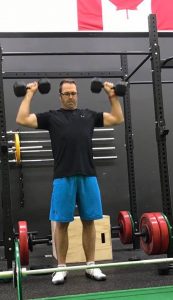
For a long time I’ve personally resented the HuntFit movement, because I took it (and still do to some degree) as an attack on the majority of hunters who simply enjoy the outdoors recreationally and may, in the course of their day-to-day lives, be out of shape, or slightly obese, or otherwise physically inferior to those who subscribed to this model of physical fitness uber alles.
I consider it in many ways to be exclusionary, and there are certain individuals out there that privately and publicly act in a definitively exclusionary way. The outdoors just seems to be an extension of the gym to them, some personal best just waiting to be conquered. I find it offensive at worst, ridiculously myopic at best. It takes away the democratic feel of the North American hunting tradition, and boils it down to ‘fit’ versus ‘unfit’.
I can also safely I’ve never shared a hunting camp with a hunter of the ‘physically fit’ variety. That’s not to say I have not hunted with very athletic and in-shape people…because I have. But more accurately, my hunting per group is just a group of average guys, some that could use to drop a few (or more than a few) pounds, some that while slim, couldn’t jog 5 minutes without breaking down, and others who ripple with muscles and live a lifestyle that renders them terrifyingly strong. But no one in my goose, duck, deer, or turkey camps makes a point of staying in shape as part of their preparation for hunting. And feats of strength rarely factor into what we value in our hunting camps…although arm-wrestling does occasionally break out.
Likewise, in the past I have shared hunting camps with some of the most physically out-of-shape people I’ve ever seen. Fat guys, chain-smokers, heavy drinkers, party animals, loud-snorers, fatty-food loving guys, and more. And you know what? Every one of them all loved hunting, and I never saw their experience diminished by their bad habits. Are their personal (and by extension, deer-camp) lifestyles beneficial and worth emulating? Probably not, but that’s not for me to decide.
I’m reasonably fit and healthy now, and I still have the same obsession for chasing waterfowl and turkeys that I did when I had sleep apnea. Losing weight and getting stronger did not ignite some hidden love of deer hunting that I did not know existed. I still like it just the same as I did when I was creeping up to 270lbs. Can I get to a deer stand without getting winded? Sure. That’s a nice fringe benefit, but is my deer hunting experience quantifiably better? No sir, it isn’t.
I’ve tried to think of all the arguments that are coming my way. People will say I didn’t love hunting enough to give it my full physical effort. That I don’t have ‘appreciation’ for what it takes to hunt fit, whatever that means. That is am just condoning lazy, “slob” hunting habits. And so on, and so on. There is an absolute truth here, and that is if you are in the minority of ultra-fit hunters and you treat that as some means to demean and devalue the vast, vast, vast majority of everyday hunters…or worse yet, try to use this HuntFit trend to make a tidy living off exploiting this majority of everyday hunters, then you are one of the things wrong with the modern hunting culture. Not a popular stance, but I stand by it.
Anyhow.
I decided to change for my kids and my wife. If there’s a hunting benefit at all, it might be that I’ll get to enjoy hunting experiences with my boys for a longer time if I’m healthier. That’s still a ‘might be’ only because I could get hit by a bus tomorrow and all the burpees, crunches, and wind-sprints won’t help me then.
So, just go out and enjoy your hunting however you like it. If it means indulging in rich food and whiskey at dinner, riding the ATV because you can’t climb hills, and hunkering into a weather-proof blind in a comfy chair, so be it. If you want to do chin-ups and push-ups before you head out to scale craggy peaks in search of game in some test of man against nature, or you against yourself, then go ahead and do that too, even though I just don’t understand it.
In either case, just be safe, have fun, and pass on the tradition. Because the future, and history of hunting is bigger than you, despite whether you choose to HuntFit or HuntFat.

